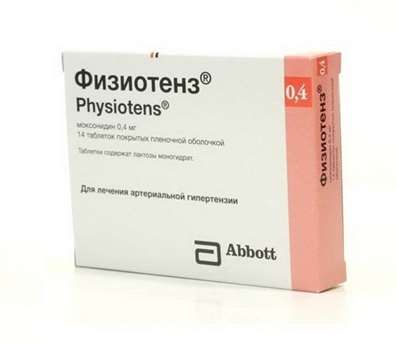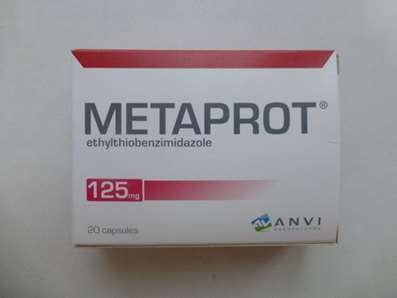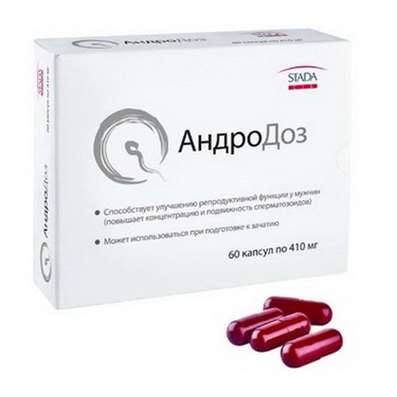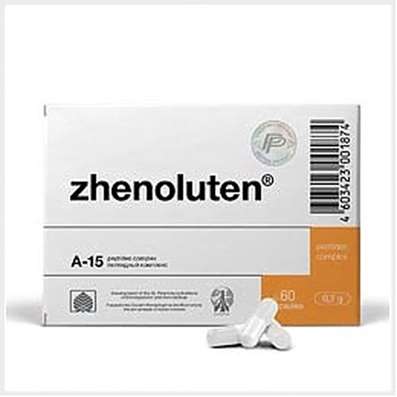Instruction for use: Alprostadil
I want this, give me price
The Latin name of the substance Alprostadil
Alprostadilum (genus. Alprostadili)
Chemical name
(11alpha, 13E, 15S) -11,15-Dihydroxy-9-oxoprost-13-en-1-oic acid (as a complex with the alpha-cyclodextrin clathrate)
Gross formula
C20H34O5
Pharmacological groups of substance Alprostadil
Angioprotectors and microcirculatory correctors
Potency regulators
Antiaggregants
Prostaglandins, thromboxanes, leukotrienes and their antagonists
Vasodilators
The nosological classification (ICD-10)
F52.2 Lack of genital response: Secondary impotence; hyposexuality; Impotence; Impotence on the basis of neurasthenia; Impotence against the background of functional nervous disorders; Impotence of different origin; Violation potency; erectile Dysfunction; potency Disorders; erectile dysfunction; Erectile dysfunction of various origins; Lack of erection; The weakening of potency; The weakening of sexual activity; The weakening of erection; Lowering the male potency; Sexual disorders in men; Sexual dysfunction; Weak potency; Reduced potency; Reduced potency; erectile disfunction; Erectile dysfunction, neurogenic
I37.1 Insufficiency of the pulmonary artery valve
I70.2 Atherosclerosis of arteries: arteriosclerosis obliterans; Arteriosclerosis peripheral arteries; Atherosclerosis of the arteries of the lower extremities; Atherosclerosis of peripheral arteries; Atherosclerosis limbs; Occlusive disease of the lower extremities; arteriosclerosis obliterans; Arteriosclerosis obliterans of lower limb arteries; Atherosclerosis obliterans of the upper limbs; Arteriosclerosis obliterans of lower extremities; Atherosclerosis of arteries; limb arteriopathy; Arteriosclerosis obliterans limbs; arteriosclerosis obliterans
I73.0 Raynaud's Syndrome: Raynaud's syndrome Leriche; Raynaud's disease; Raynaud's phenomenon; RaynaudLeriche syndrome; Raynaud's disease; Raynaud's syndrome with trophic disorders; Peripheral angiopathy
I73.1 thromboangiitis obliterans [Buerger's disease]: Berger's disease; thromboangiitis obliterans; trombangiit; thromboangiitis obliterans; Buerger's disease
I73.8 Other specified peripheral vascular disease: Syndrome of intermittent claudication; endarteritis obliterans; acrocyanosis; vasoconstriction; occlusive disease; Intermittent claudication; Disorders of vascular innervation; Spasm of peripheral arteries; Arterial angiopathy; Venous insufficiency and its complications; Spasm of peripheral vessels; The spasm of coronary vessels; endarteritis; cooling stop; Occlusal disorders of peripheral circulation; Peripheral vascular occlusion
I77.1 Arteriostenosis: Occlusive arterial disease; Peripheral arterial occlusive disease;Peripheral arterial
I77.6 Unspecified Arteritis: aortoarteriit; vasculitis; Neateroskleroticheskoe coronary arteries
I79.2 Peripheral angiopathy in diseases classified elsewhere: diabetic angiopathy; Angiopathy in diabetes; arteriosclerosis diabetic; Pain in lesions of peripheral nerves; Diabetic angiopathy; Diabetic microangiopathy; Diabetic vascular disease; Intermittent angioneurotic disbaziya; Macroangiopathy in diabetes; microangiopathy; Microangiopathy in diabetes mellitus; Tingling sensations in the hands and feet; Coldness in the extremities; Peripheral angiopathy; Peripheral arterial disease; Sclerosis Menkeberga; Chronic obliterating diseases of arteries
Q21.3 Fallot's tetralogy: A defect type ostium primum; Associated congenital cyanotic heart; defectstetralogy of Fallot
Q22.4 Congenital stenosis of the tricuspid valve: Atresia of the tricuspid valveĉ Tricuspid Valve Stenosis
Q23.2 Congenital mitral stenosis: mitral atresia; Mitral atresia; Mitral heart defects; Malformations of the mitral valve
Q24 Other congenital malformations of heart: Congenital malformations of the heart
R25.2 Cramp and spasm: Muscle spasms in tetanus; Pain syndrome with smooth muscle spasms; Pain syndrome with smooth muscle spasms (renal and biliary colic, intestinal spasm, dysmenorrhea); Pain syndrome with spasms of smooth muscles of internal organs; Pain syndrome with spasms of smooth muscles of internal organs (renal and biliary colic, intestinal spasm, dysmenorrhea); Painful muscular spasm; Mimic spasms; Muscular spasticity; Muscle spasms; Muscular spasms of central origin; Muscular spasticity; Muscle spasm; Neurological contractures with spasms; Night cramps in the extremities; Nocturnal cramps in the legs; Night cramps calf muscles; Symptomatic convulsive state; Vesta Syndrome; Spasm of smooth muscles; Spasm of smooth vascular musculature; Spasm of muscles; Spasm of striated muscle due to organic diseases of the central nervous system; Skeletal muscle spasms; Spasms of smooth muscles of internal organs; Skeletal Muscle Cramps; Spastic states of striated musculature; Spasmodic pain syndrome; The spastic condition of smooth muscles; Spasticity of skeletal musculature; Muscle cramp; Convulsions; Cramps of the calf muscles; Convulsions of central origin; Convulsive condition; Convulsive Syndrome; Convulsive status in children; Tonic convulsions; Cerebral spasmodic syndrome; clasp knife phenomenon
Z57.7 Adverse effects of industrial vibration: vibration
CAS Code
745-65-3
Characteristics of substance Alprostadil
Synthetic analogue of natural prostaglandin E1 (PGE1). A white or almost white crystalline powder with a melting point between 115 and 116 ° C, solubility at 35 ° C is 8,000 μg / 100 ml of bidistilled water. Molecular weight is 354.49.
Pharmacology
Mode of action - Vasodilator, antiaggregatory.
Alprostadil has a wide range of pharmacological effects. Among its most significant effects are vasodilation, suppression of platelet aggregation, stimulating effect on the smooth muscles of the intestine, uterus and other smooth muscle organs. It improves microcirculation, increases peripheral blood flow, and has a vasoprotective effect. With systemic administration, it causes relaxation of the smooth muscle fibers of the vascular wall, has a vasodilating effect, reduces the OPSS, lowers blood pressure. At the same time there is a reflex increase in cardiac output and heart rate. Promotes increased elasticity of erythrocytes, reduces platelet aggregation and neutrophil activity, increases fibrinolytic activity of blood.
Smooth muscle cells of the arterial duct have a high sensitivity to the action of alprostadil, which makes it possible to use it in newborn children with congenital ductus-dependent heart defects, incl. With mitral atresia, pulmonary atresia, tricuspid valve, tetralogy of Fallot. Alprostadil is used for palliative treatment before surgery. Using alprostadil allows maintaining the arterial duct in the open state, which improves blood circulation and oxygenation. Treatment with alprostadil in this case is basically a short-term measure, but sometimes (if necessary, postpone surgery), long-term therapy (up to several months) may be required.
The effect of alprostadil in the treatment of erectile dysfunction is associated with the inhibition of alpha1-adrenergic transmission in the tissues of the penis and a relaxing effect on the smooth muscles of the cavernous bodies. Expansion of the cavernous arteries and relaxation of the trabecular smooth muscles of the cavernous bodies leads to a rapid inflow of blood and dilatation of the lacunar spaces in the cavernous bodies; Venous outflow through vessels located under the belly, it becomes difficult and develops an erection (the so-called "corporal veno-occlusive mechanism"). The effect develops within 5-10 minutes after intracavernous administration and lasts 1-3 hours.
Alprostadil is rapidly metabolized, T1 / 2 is about 10 sec. With IV introduction, approximately 80% (in a healthy adult person, with one passage - up to 70-90%), circulating alprostadil is metabolized by "first passage" through the lungs, mainly by beta and omega-oxidation. As a result of enzymatic oxidation, several metabolites are formed, incl. 15-keto-PGE1; 13,14-dihydro-PGE1 and 13,14-dihydro, 15-oxo-PGE1. Keto metabolites have a lower biological effect compared to alprostadil. Metabolites of alprostadil are excreted mainly by the kidneys (about 90% of the administered dose within 24 hours), the rest - with feces. There was no evidence of unmetabolized alprostadil in the urine, and there are also no data on the delay of alprostadil or its metabolites in the tissues.
With intracavernous injection of 20 μg of alprostadil, the average concentrations in the peripheral blood at 30 and 60 min after injection (89 and 102 pg / ml, respectively) were not significantly higher than the baseline level of endogenous PGE1 (96 pg / ml), while the level of the main circulating metabolite alprostadil (13,14-dihydro, 15-oxo-PGE1) in the peripheral blood was increased (Tmax-30 min) and returned to the initial one 60 minutes after the injection. Alprostadil binds to plasma proteins, mainly with albumin (81%), to a lesser extent - with fraction IV-4 alpha-globulin (55%). There was no significant binding of alprostadil with erythrocytes or leukocytes. When entering the systemic bloodstream during intracavernous administration, it is very rapidly metabolized, mainly in the lungs.
Application of the substance Alprostadil
Concentrate / lyophilizate for the preparation of a solution for infusions: chronic obliterating diseases of peripheral arteries of the III-IV stage (according to Fontaine's classification), accompanied by pain at rest or trophic changes. Obliterating endarteritis with severe intermittent claudication, arteriosclerosis of arteries of the extremities, diabetic angiopathy, obliterating thromboangiitis (Buerger's disease), Reynaud's syndrome with trophic disorders, vasculitis, systemic scleroderma, spasms of the calf muscles, peripheral circulation disorders as a result of damaging effects Physical factors, especially over-limit vibration. Congenital ductus-dependent heart defects in newborns (for temporary maintenance of arterial duct functioning before reconstructive cardiosurgery operation), incl. Mitral atresia, pulmonary atresia, tricuspid valve, tetralogy of Fallot.
Lyophilizate for the preparation of solution for intracavernous administration: erectile dysfunction of neurogenic, vascular, psychogenic or mixed etiology; Conducting a pharmacological test in the diagnosis of erectile dysfunction.
Contraindications
Concentrate / lyophilizate for solution for infusion: hypersensitivity, pregnancy, lactation. In neonatology: oppression of respiratory function, respiratory distress syndrome, the state of spontaneous persistent-open arterial duct.
Lyophilizate for the preparation of a solution for intracavernous administration: hypersensitivity, predisposition to prolonged erection (sickle cell anemia, including suspected cases, multiple myeloma, leukemia, etc.), anatomical deformations of the penis (angulation, cavernous fibrosis, Peyronie's disease) , Urethral stricture, hypospadias, age under 18 years and over 75 years (no experience in using these groups of patients); Men who are contraindicated or not recommended sex life; Presence of an implant of the penis.
Restrictions
Concentrate / lyophilizate for solution for infusion: acute and subacute myocardial infarction, incl. Transferred during the last 6 months; Severe or unstable angina, decompensated CHF, arterial hypotension, cardiovascular insufficiency (special attention should be paid to control of the load volume of the carrier solution), edema or infiltrative changes in the lungs, broncho-obstructive syndrome of severe degree with signs of respiratory failure, hepatic insufficiency (in tons In a history), conditions characterized by an increased risk of bleeding (peptic ulcer of the stomach and duodenum, severe brain damage, proliferative retinopathy with a tendency to bleeding, extensive trauma, etc.), hemodialysis (treatment should be carried out in the postdialysis period ), Type 1 diabetes mellitus, especially with extensive vascular lesions (in elderly patients), concomitant therapy with vasodilating drugs or anticoagulants. In neonatology: bradypnoe, arterial hypotension, tachycardia or hyperthermia.
Lyophilizate for the preparation of solution for intracavernous administration: thrombocytopenia, polycythemia, venous thrombosis (including predisposition), increased blood viscosity, balanitis, urethritis.
Side effects of substance Alprostadil
Infusion introduction
From the nervous system and sensory organs: headache, dizziness, paresthesia, convulsive syndrome, increased fatigue, a feeling of malaise, a violation of the sensitivity of the skin and mucous membranes; Rarely confusion, psychosis.
From the cardiovascular system and blood (hematopoiesis, hemostasis): lowering blood pressure, tachycardia, cardialgia, heart rhythm disturbances, AV blockade, redness of the skin; Rarely - the development or deepening of heart failure, leukopenia or leukocytosis.
On the part of the respiratory system: dyspnea; Rarely - respiratory distress syndrome, acute pulmonary edema.
On the part of the intestine: a feeling of discomfort in the epigastric region, nausea, vomiting, diarrhea, increased activity of hepatic transaminases; Rarely - hyperbilirubinemia.
From the genitourinary system: rarely - kidney failure, hematuria.
From the musculoskeletal system: arthralgia; At long continuous application (more than 4 weeks) - reversible hyperostosis of tubular bones.
Allergic reactions: skin rashes, hives, itching.
Other: increased sweating, hyperthermia, chills, puffiness of the extremity, the vein of which is administered by infusion; Rarely - an increase in the titer of the C-reactive protein; Reactions at the site of administration - pain, edema, erythema, impaired sensitivity, phlebitis proximal to the site of intravenous administration (up to 40% of patients).
Very rarely (up to 1% of cases): shock, acute heart failure, hyperbilirubinemia, bleeding, drowsiness, bradypnoea, decreased respiratory function, tachypnea, anuria, renal dysfunction, hypoglycaemia, ventricular fibrillation, AV block II, supraventricular arrhythmia, stress Neck muscles, increased irritability, hypothermia, hypercapnia, skin flushing, hematuria, peritoneal symptoms, tachyphylaxis, hyperkalemia, thrombocytopenia, anemia.
In newborns: apnea (frequency 10-12%), fever (14%), hyperemia of the skin (about 10%, especially with a / a introduction), bradycardia (7%), lowering blood pressure (4%), convulsions ( 4%), tachycardia (3%); About 2% - diarrhea, sepsis; About 1% - cardiac arrest, edema, DVS-syndrome, hypokalemia; ≤1% - cerebral hemorrhage, excessive neck extension, hypothermia, nervous excitement, lethargy, congestive heart failure, AV block of degree II, supraventricular tachycardia, ventricular fibrillation, bradypnoea, stridor, hypercapnia, respiratory depression, tachypnea, gastric regurgitation, hyperbilirubinemia , Anemia, bleeding, thrombocytopenia, anuria, hematuria, peritoneal symptoms, hypoglycemia, hyperkalemia; With a long course of treatment (within a few weeks) reported on hyperostosis in the bones of the lower extremities (see also "Precautions").
Intracavernous injection
Local reactions: pain in the penis (37%), excessive prolonged erection (up to 4-6 hours - 4%), hematoma (3%) and ecchymosis (2%) at the injection site (associated with improper technique of administration), fibrotic Nodules and Peyronie's disease (3-8%), swelling of the penis (1%), eruptions on the penis (1%); Less than 1% - priapism (0.4%), balanitis, hemorrhages at the injection site; Inflammation, itching and swelling at the injection site, bleeding from the urethra, penile disorders, incl. Sensation of fever in the penis, numbness, fungal infection, irritation, hypersensitivity, phimosis, rash, erythema, venous discharge, painful erection, ejaculatory dysfunction.
Systemic effects (rarely): pain and swelling of the scrotum and testicles, increased urination, urinary incontinence, fluctuations in blood pressure (increase or decrease), tachycardia, supraventricular extrasystole, peripheral circulation, fatigue, headache, hypoesthesia, edema of the legs, hyperhidrosis, nausea, Dry mouth, increased serum creatinine, gastrocnemius muscle cramps, weakness in the buttocks, localized pain (in the chest, in the buttocks, pelvic region, in the legs, genitals, abdomen), mydriasis, influenza-like syndrome.
Interaction
Pharmaceutically incompatible with solutions of other drugs.
With the infusion method of administration: may enhance the effect of antihypertensive drugs, vasodilators and antianginal drugs; Simultaneous use of alprostadil in patients taking drugs that prevent blood clotting (anticoagulants, antiaggregants) may increase the chance of bleeding; In combination with cefamandole, cefoperazone, cefotetan and thrombolytic - increases the risk of bleeding; Sympathomimetics (epinephrine, norepinephrine) - reduce the vasodilating effect; It must be taken into account that interaction is possible even if the above drugs were used shortly before alprostadil therapy was started.
With intracavernous injection, joint administration with hypotensive drugs, diuretics, NSAIDs, insulin and oral hypoglycemic drugs does not affect the efficacy and safety of alprostadil.
Overdose
Concentrate / lyophilizate for solution for infusion
Symptoms: decreased blood pressure, hyperemia of the skin, weakness; In newborns (in addition) - apnea, bradycardia.
Treatment: slowing or stopping the infusion, symptomatic therapy; When signs of oppression of the respiratory center in newborns are shown, ventilation is indicated.
Liofilizate for the preparation of solution for intracavernous administration
Symptoms: pain in the penis, prolonged erection and / or priapism, irreversible deterioration of erectile function.
Treatment: if the erection lasts less than 6 hours, medical supervision is necessary, since. Spontaneous regression often occurs; If more than 6 hours - carrying out intracavernous injection of adrenomimetics (for example, ephedrine, epinephrine, phenylephrine), performing aspiration of blood from cavernous bodies or, if necessary, surgical treatment.
Routes of administration
intraarterial, I.V.(intravenously), intracavernous.
Precautions for Alprostadil
Alprostadil for infusion can only be used by physicians with experience in angiology, who are familiar with modern methods of continuous monitoring of the cardiovascular system and who have the appropriate equipment for this. During the period of treatment, control of blood pressure, heart rate, biochemical indices and blood clotting are necessary (for violations of the blood coagulation system or for simultaneous therapy of drugs that affect the coagulation system).
Patients with IHD, as well as patients with peripheral edema and renal dysfunction (serum creatinine> 1.5 mg / dL) should be monitored in the hospital during treatment with alprostadil and within 24 hours after discontinuation. In order to avoid the appearance of symptoms of hyperhydration in patients with renal insufficiency, the volume of injected fluid should not exceed 50-100 ml / day, if possible. Dynamic monitoring of the patient's condition is mandatory: control of blood pressure and heart rate, if necessary, control of body weight, fluid balance, measurement of central venous pressure, or echocardiography.
Phlebitis (proximal to the injection site), as a rule, is not a reason for discontinuing therapy, signs of inflammation disappear after several hours after stopping the infusion or changing the place of administration of the drug; Specific treatment in such cases is not required. Catheterization of the central vein can reduce the incidence of this side effect of the drug.
In connection with the risk of apnea in newborns, alprostadil should be used in institutions that have the qualified personnel and equipment necessary to provide intensive care for children, under the constant control of blood pressure, if there are conditions for immediate ventilation.
Apnea (see "Side effects") is most often observed in newborns with birth weight less than 2 kg and usually occurs during the first hour of infusion. The appointment of alprostadil to newborns can lead to obstruction of the orifice of the pylorus of the stomach. This effect, apparently, depends on the duration of therapy and the cumulative dose of drugs. Newborns receiving alprostadil at recommended doses of more than 120 h should be carefully observed.
In the treatment of erectile dysfunction before the initiation of alprostadil therapy, diagnosis of the causes of erectile dysfunction should be performed. Selection of the dose should be carried out in each patient individually, under the supervision of a doctor, with monitoring the state of the cardiovascular system and the duration of erections. To reduce the likelihood of developing a prolonged erection or priapism in selecting a dose, it is necessary to increase it slowly, until the minimum effective dose is reached (the appearance of an erection lasting no more than 1 hour and sufficient for the sexual intercourse). During the selection of the dose, the patient should be under the supervision of a doctor until the erection disappears. If the first dose is ineffective, the second, higher, can be administered no earlier than 1 hour. If there is a response, the interval between doses should be at least 1 day. Self-injection patients can be appointed only after conducting detailed instruction of the patient and mastering the technique of self-injection. Treatment begins with a dose selected by the doctor. The patient is recommended to visit the attending physician every 3 months to assess the effectiveness and safety of treatment and, if necessary, to adjust the dose.
The patient should be warned that during the treatment he should inform the doctor about all cases of erection lasting more than 4 hours. Untimely correction of priapism can lead to irreversible damage to the tissues of the penis and a long-term loss of potency.
Alprostadil is not intended for simultaneous use with other drugs for the treatment of erectile dysfunction.
Special instructions
It is necessary to strictly observe the compliance of the drug form of alprostadil with specific indications for its use.
Do not mix with solutions of other drugs.

 Cart
Cart





